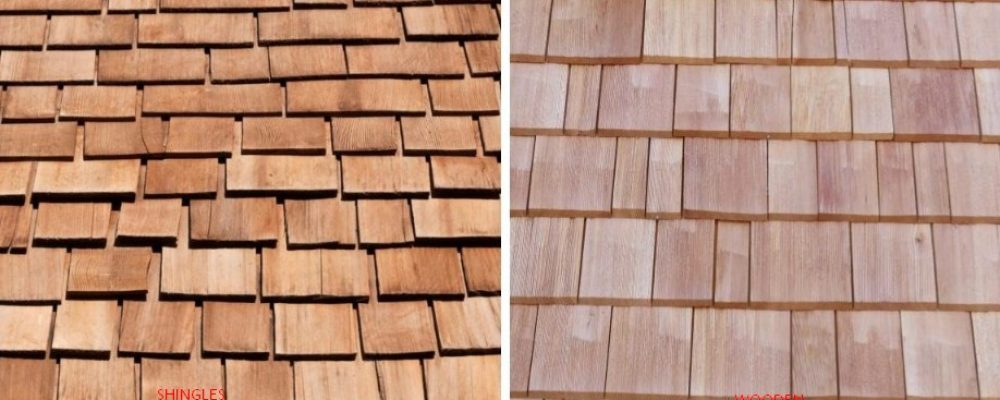In the construction of houses and buildings, one of the most important aspects to consider is the type of roofs to use.
Furthermore, there are two common options, which are wooden roofs and shingles. Both have their own advantages and disadvantages. So it is crucial to understand the differences between them before making a decision.
In this article, we will explore the characteristics, durability, cost, and other important factors that will help determine which is better: wooden roofs or shingles.
Wooden roofs:
Wooden roofs are appreciated for their rustic and natural appearance. They are often used in traditional or country-style homes.
Wood provides a warm and cozy aesthetic that can be very appealing to many homeowners. In addition to its appearance, wooden roofs also have other notable advantages.
Advantages of wood roofs:
- Thermal insulation: Wood is an excellent thermal insulator, which means it helps maintain a more stable indoor temperature.
- This can result in long-term energy savings. Durability: If built and maintained properly, a wood roof can last for decades or even centuries. However, regular maintenance is important to protect the wood from damage caused by moisture and insects.
- Ecological: Wood is a natural and renewable material, making it a more sustainable option compared to other building materials.
- Design flexibility: Wood roofs allow for greater design and customization flexibility. They can be carved, painted, or treated with different types of finishes to achieve the desired appearance.
Disadvantages of wooden roofs:
- Initial cost: Wooden roofs tend to be more expensive than shingles in terms of installation and materials.
- Maintenance: They require regular maintenance to prevent damage caused by moisture and insects. This may include sealing, painting, and replacing damaged boards.
- Higher risk of fire: Wood is flammable, which means that wooden roofs may present a higher risk of fire compared to shingles. However, fire-resistant coatings can be used to minimize this risk.
Shingles
Shingles. are a popular choice for roofs due to their durability, aesthetic variety, and low maintenance needs. However, it is important to consider the initial cost, the need for reinforced structures, and their sensitivity to impacts and temperature changes.
Tiles are available in a variety of materials, including clay, concrete, slate, and metal. We will now analyze the advantages and disadvantages of Shingles.
Advantages of Shingles:
- Durability: Shingles are resistant to the elements and can withstand adverse weather conditions such as rain, wind, and even hail. Most manufacturers offer warranties of up to 25 or even 50 years.
- Low maintenance: Shingles require minimal maintenance once correctly installed. Their durability makes them less prone to damage.
- Variety of styles and colors: Shingles come in a wide range of styles and colors, allowing homeowners to choose a look that fits their home’s aesthetic.
- Fire resistance: Depending on the type of tile used, some Shingles can be fire-resistant, improving home safety.
Disadvantages of Shingles:
- Initial cost: Compared to other roofing materials, Shingles are generally more expensive. In addition to the cost of the material itself, specialized labor is also required for installation, which can further increase the total cost.
- Weight: Shingles can be heavier compared to other roofing materials, such as metal sheets. This may require a reinforced support structure to ensure stability and prevent potential structural damage.
- Vulnerability to impact damage: Although Shingles are resistant, they can be damaged if struck by blunt objects, such as fallen branches or pieces of ice during a storm. This type of damage may require repairs or partial tile replacements.
- Sensitivity to temperature changes: Shingles can expand and contract due to temperature changes. This can lead to cracks or breakage over time, especially in areas with extreme climates.
Conclusion:
Ultimately, the choice between a wooden roof and shingles will depend on the homeowner’s personal preferences, the style of the house, the climate conditions in the area, and the available budget. Both options have their own advantages and disadvantages, and it’s important to carefully weigh them before making a decision.
If you’re looking for a rustic and natural look, along with excellent thermal insulation and the possibility of customization, a wooden roof might be the right option for you. However, you need to consider the higher initial costs and the regular maintenance required to keep the wood in good condition.
On the other hand, shingles offer durability, resistance to the elements, and a wide variety of styles and colors to suit your aesthetic. Although shingles may have a lower initial cost, you may need to consider the need for a reinforced support structure due to their weight.





